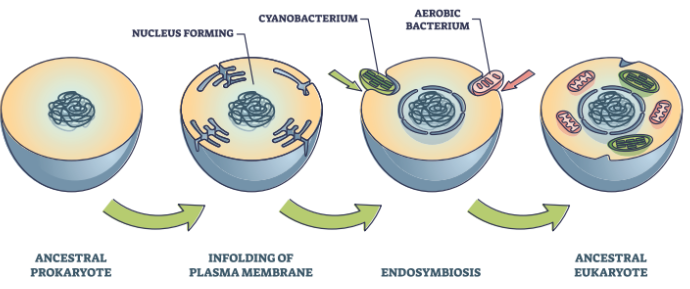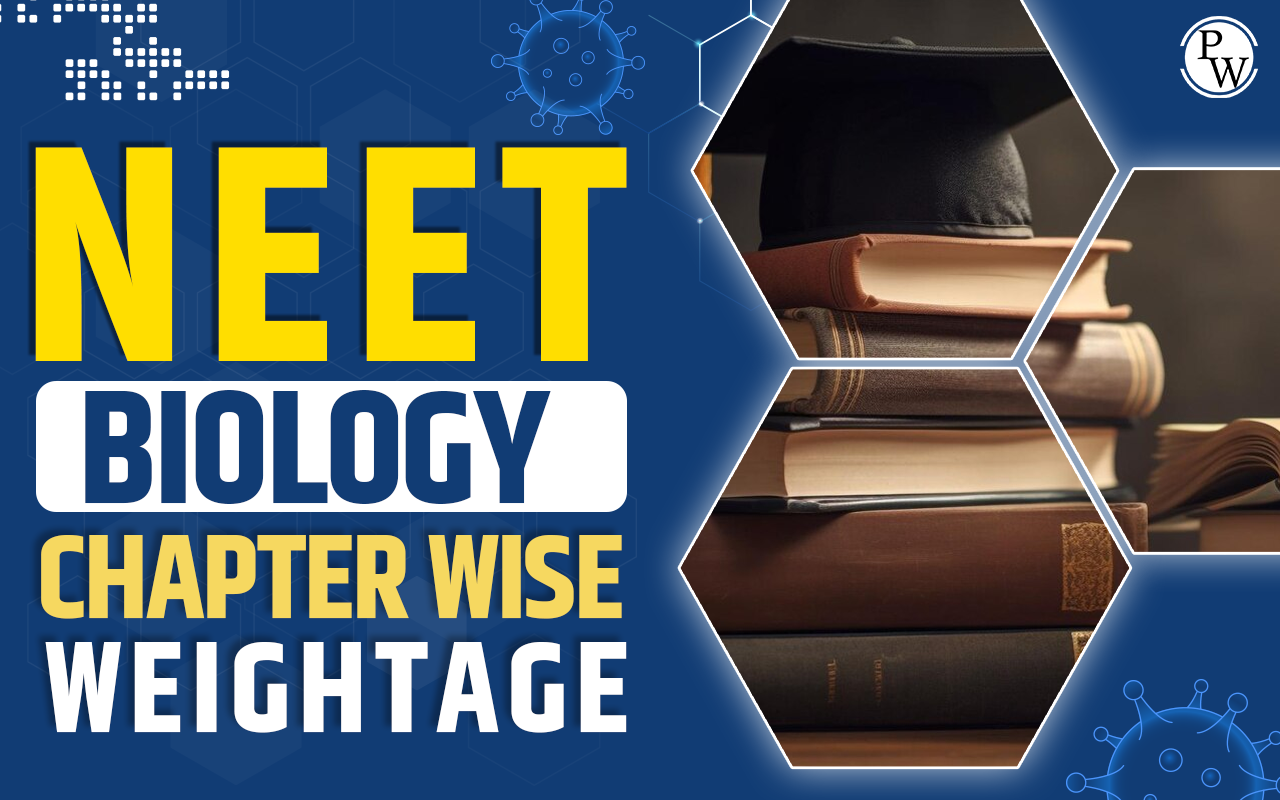
The Endosymbiotic Theory provides a detailed explanation of how this biological process led to the evolution of complex cells, known as eukaryotic cells, from simpler prokaryotic cells. According to this theory, certain organelles within eukaryotic cells, particularly mitochondria and chloroplasts, originated from once free-living prokaryotic organisms.
Understanding this theory is crucial for the NEET Exam as it highlights key concepts in cell biology and evolution, which are essential components of the NEET syllabus .What is Endosymbiotic Theory?
The Endosymbiotic Theory is the scientific explanation that suggests eukaryotic cells, which are complex and contain organelles like mitochondria and chloroplasts , evolved from the symbiotic relationship between ancient prokaryotic cells. According to this theory, certain prokaryotic cells were engulfed by larger host cells and, instead of being digested, began living inside them, eventually evolving into essential organelles. This mutual relationship is believed to have led to the development of modern eukaryotic cells. This theory remains one of the most significant explanations of how life on Earth evolved from simple to complex forms, providing insight into the origins of crucial cellular structures and their functions.Evidence Supporting the Endosymbiotic Theory
The main evidence for the Endosymbiotic Theory comes from organelles like mitochondria and chloroplasts. These organelles have several features similar to prokaryotic cells, such as:- Double membrane : Both mitochondria and chloroplasts have a double membrane, which suggests that they were engulfed by another cell.
- Own DNA: These organelles contain their own circular DNA , similar to the DNA found in bacteria.
- Ribosomes : Mitochondria and chloroplasts have ribosomes that are more like those in bacteria than those found in the rest of the eukaryotic cell.
- Reproduction : They reproduce in a way similar to bacteria, through a process called binary fission, meaning they divide on their own inside the cell.
- Organelle Genomes : Organelles retain a miniaturized prokaryotic chromosome, encoding fewer than 200 proteins in plastids and fewer than 63 proteins in mitochondria, further supporting their prokaryotic origins.

Endosymbiosis
Endosymbiosis refers to one organism living inside another, forming a relationship where both organisms benefit. In the case of the Endosymbiotic Theory, it is believed that certain prokaryotic cells were engulfed by larger cells. Over time, these smaller cells became an integral part of the larger cell, leading to the evolution of eukaryotic cells.Importance of Endosymbiotic Theory
The Endosymbiotic Theory plays a crucial role in understanding the evolution and complexity of life:- Evolution of Eukaryotic Cells : It explains how complex eukaryotic cells evolved from simpler prokaryotic cells, marking a significant step in the development of life on Earth.
- Formation of Key Organelles: The theory shows how vital organelles like mitochondria and chloroplasts originated through the symbiotic relationship between ancient cells, which allowed for more efficient energy production and photosynthesis.
- Diversity of Life : Endosymbiosis contributed to the rise of multicellular organisms, greatly enhancing the biological diversity we see today.
- Disease and Cellular Processes : Understanding the origin of eukaryotic cells has important implications in fields such as medicine and biotechnology, helping to explain cellular processes and the development of certain diseases.
MCQs of Endosymbiotic Theory
Q1. The theory of endosymbiosis explains;
- The origin of eukaryotes.
- development of species.
- habitat of bacteria.
- the reliability of cells on one another.
Q2. Which organelle in plant cells is responsible for photosynthesis and is believed to have an endosymbiotic origin?
- Nucleus
- Vacuole
- Chloroplast
- Endoplasmic reticulum
Q3. According to the endosymbiotic theory, the infoldings and specializations of the plasma membrane led to the evolution of the endomembrane system.
- True
- False
MCQs Answers of Endosymbiotic Theory
Ans1 . (1) The origin of eukaryotes.,| NEET Exam Important Links | |
|---|---|
| NEET Biology Syllabus | NEET Biology Diagrams |
| NEET Biology MCQ | NEET Biology Chapter wise Weightage |
| NEET Biology Notes | NEET Previous Year Question papers |
Endosymbiotic Theory FAQs
Q. What does the Endosymbiotic Theory explain?
Ans. The Endosymbiotic Theory explains how eukaryotic cells (complex cells with organelles) evolved from prokaryotic cells (simpler cells without organelles) through a symbiotic relationship.
Q. Who proposed the Endosymbiotic Theory?
Ans. The Endosymbiotic Theory was popularized by biologist Lynn Margulis in the 1960s, although the concept was first introduced by botanist Konstantin Mereschkowski between 1905 and 1910.
Q. What is the Endosymbiotic Theory?
Ans. The Endosymbiotic Theory is the idea that certain organelles in eukaryotic cells, such as mitochondria and chloroplasts, originated from prokaryotic cells that were taken inside another cell and formed a mutually beneficial relationship over time.
Q. What is the best definition of endosymbiosis?
Ans. Endosymbiosis is a condition where one organism (the endosymbiont) lives inside the cells or body of another organism in a mutually beneficial relationship.
Q. What does the Endosymbiotic Theory say about mitochondria?
Ans. The Endosymbiotic Theory suggests that mitochondria were once free-living aerobic bacteria that were engulfed by an early eukaryotic cell. Over time, they developed a symbiotic relationship, providing the host cell with energy in exchange for protection and resources.
Q. What are the three main sources of evidence for endosymbiosis?
Ans. The evidence for endosymbiosis includes circular DNA in mitochondria and chloroplasts, double membranes indicating engulfment, and their independent reproduction through binary fission.
🔥 Trending Blogs
Talk to a counsellorHave doubts? Our support team will be happy to assist you!

Free Learning Resources
PW Books
Notes (Class 10-12)
PW Study Materials
Notes (Class 6-9)
Ncert Solutions
Govt Exams
Class 6th to 12th Online Courses
Govt Job Exams Courses
UPSC Coaching
Defence Exam Coaching
Gate Exam Coaching
Other Exams
Know about Physics Wallah
Physics Wallah is an Indian edtech platform that provides accessible & comprehensive learning experiences to students from Class 6th to postgraduate level. We also provide extensive NCERT solutions, sample paper, NEET, JEE Mains, BITSAT previous year papers & more such resources to students. Physics Wallah also caters to over 3.5 million registered students and over 78 lakh+ Youtube subscribers with 4.8 rating on its app.
We Stand Out because
We provide students with intensive courses with India’s qualified & experienced faculties & mentors. PW strives to make the learning experience comprehensive and accessible for students of all sections of society. We believe in empowering every single student who couldn't dream of a good career in engineering and medical field earlier.
Our Key Focus Areas
Physics Wallah's main focus is to make the learning experience as economical as possible for all students. With our affordable courses like Lakshya, Udaan and Arjuna and many others, we have been able to provide a platform for lakhs of aspirants. From providing Chemistry, Maths, Physics formula to giving e-books of eminent authors like RD Sharma, RS Aggarwal and Lakhmir Singh, PW focuses on every single student's need for preparation.
What Makes Us Different
Physics Wallah strives to develop a comprehensive pedagogical structure for students, where they get a state-of-the-art learning experience with study material and resources. Apart from catering students preparing for JEE Mains and NEET, PW also provides study material for each state board like Uttar Pradesh, Bihar, and others
Copyright © 2025 Physicswallah Limited All rights reserved.
Get App









